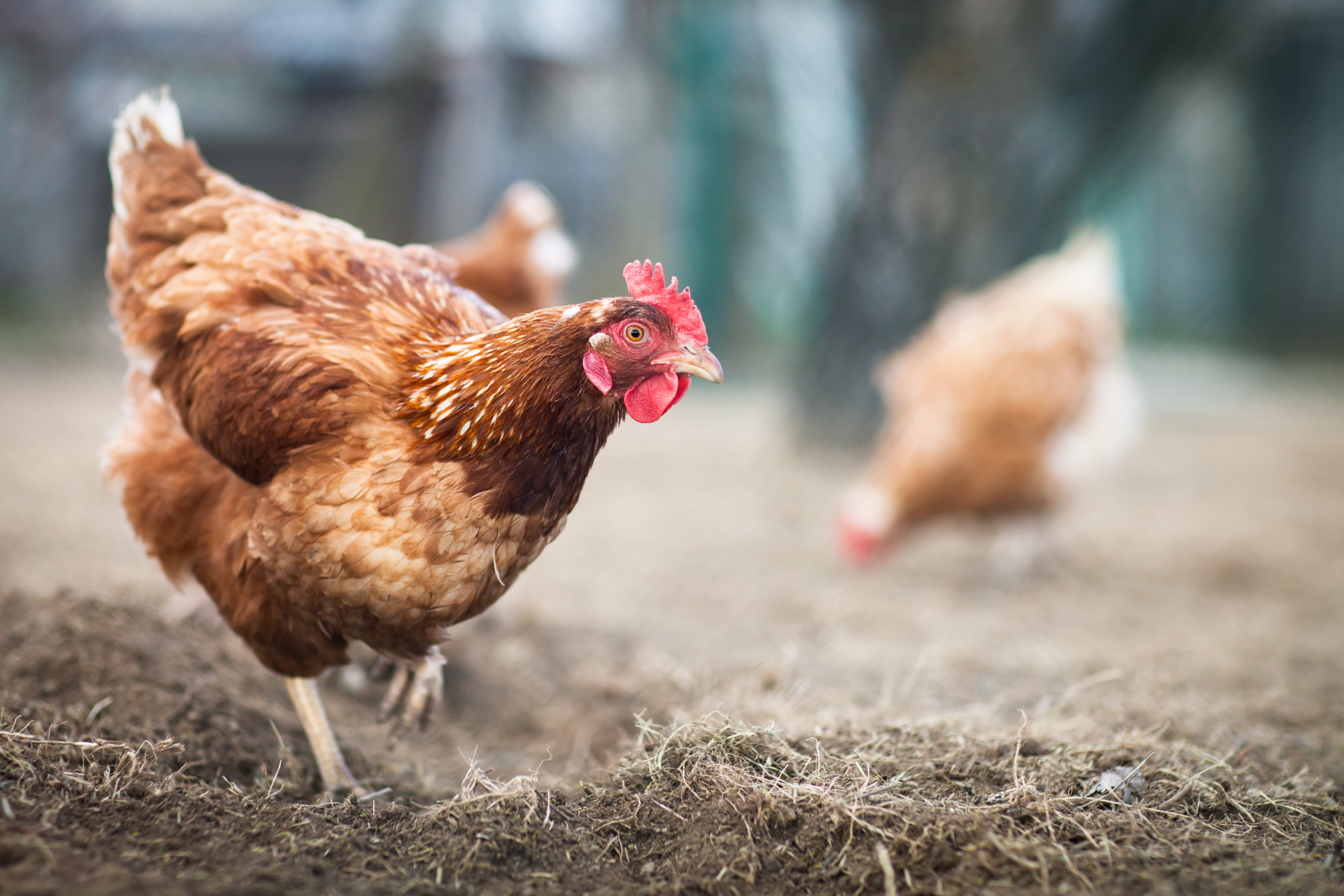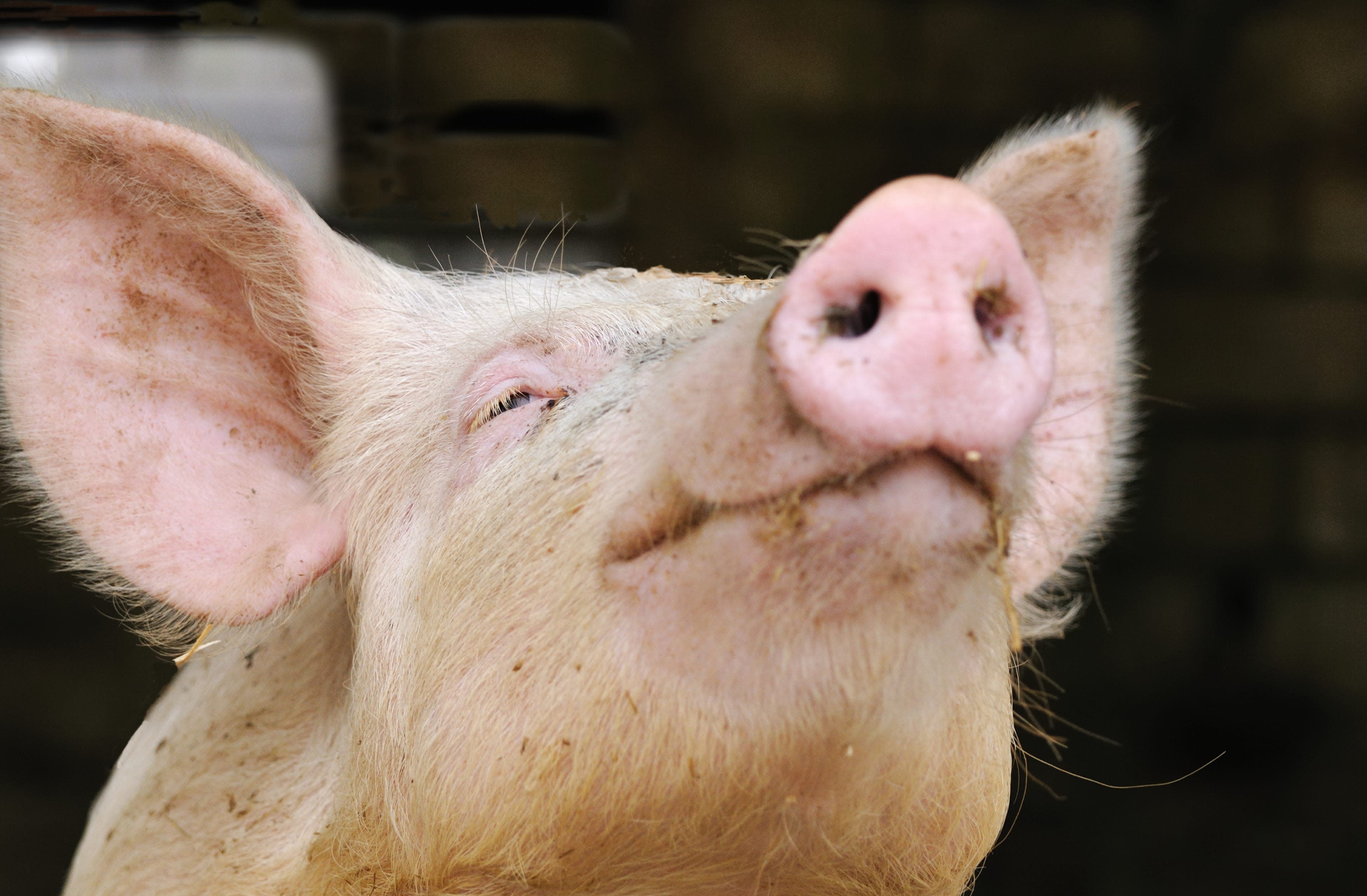




Arizona prohibited the production and sale of eggs from caged hens, joining nine other states in protecting egg-laying hens at the state level: Utah, Colorado, Michigan, Washington, Oregon, California, Massachusetts, Rhode Island, and Nevada.

Cage-free eggs are the future—and Arizona is the latest state to join the movement to make that future a reality.
In the fight to free hens from battery cages—brutal metal enclosures as small as filing cabinet drawers—state-wide legislation and regulation is one of the most powerful ways to enact change. In writing new regulations to protect egg-laying hens from a lifetime of mistreatment and misery in confinement, Arizona is making crucial progress for chickens, not just within the Grand Canyon State but also beyond its borders. By 2025, all eggs laid or sold within the state of Arizona must be 100% cage-free. This means that, once the rule is fully implemented, over seven million hens will be spared from life in extreme confinement every single year.
What are cage-free eggs?
Cage-free eggs are eggs laid by hens who were spared the abuses of battery cages. These cages are currently—and sadly—the industry standard for raising egg-laying hens. While the cage-free flock is growing year by year, thanks to the relentless efforts of animal advocates across the country, two thirds of all egg-laying hens in the United States are still confined to small, barren cages for most of their short lives. This means that the vast majority of eggs laid, sold, and consumed in the US are produced by hens living in extreme confinement.
Designed to maximize efficiency, battery cages hold anywhere between four and ten birds at once. Generally made of wire, hens often twist their ankles—or even break their brittle bones—in the mesh floors that sieve their feces and waste. Confined to these cages, hens can’t stand up straight or even spread their wings without hitting the walls or another hen.
“Cage-free” means an egg-laying hen was spared from the torture of battery cages, where she would have endured incredible physical and mental duress day in and day out.
What are the cage-free regulations in Arizona?
Arizona’s cage-free regulations don’t just ban the production of eggs laid by hens in battery cages—the regulations also ban the sale of eggs laid by hens in battery cages. Seven of the nine other US states that have protections for egg-laying hens—a majority—match Arizona’s higher standard for animal welfare. While Utah and Rhode Island only ban the production—and not the sale—of eggs from caged hens, Colorado, Michigan, Washington, Oregon, California, Massachusetts, and Nevada all ban both.
According to the new rule, Arizona farmers are required to provide egg-laying hens with at least one square foot of floor space—an important upgrade to the harsh conditions of battery cages, which confine each bird to an area no bigger than the surface of a small iPad per animal. By 2025, “ all laying hens in the state must be housed in a cage-free manner, and all eggs sold in the state must come from hens housed in a cage-free manner.” In other words, farmers will need to keep their hens in cage-free housing systems that allow the birds to roam freely in environments filled with enrichments—scratch areas, perches, nest boxes, and places to dust bathe—that encourage them to engage in their natural behaviors.
Moreover, Arizona is making amazing progress for egg-laying hens, not only by protecting birds who produce eggs in-state but also by protecting birds in other states whose eggs are sold in Arizona. What this means is that Arizona farmers raising hens have to give each bird more space, and out-of-state farmers do, too, if their hens’ eggs will hit the shelves of Arizona supermarkets or supply Arizona restaurants.
How did Arizona go cage-free?
Unlike other states that went cage-free through new legislation, Arizona went cage-free through updated regulations. The Governor’s Regulatory Review Council is the government body appointed with reviewing proposed rules in the state of Arizona. In assessing “whether a rule is clear, concise, and understandable, legal, consistent with legislative intent, within the agency's statutory authority, and whether the benefits of a rule outweigh the cost,” it represents the “final step in the rulemaking process for most state agencies.”
Although a cage-free bill was introduced in 2020 and successfully passed in the House, it didn’t make it through the Senate. The new regulations advance the cage-free cause ahead of any new legislative efforts—and compassionate consumers drove this regulatory change by demanding an end to battery cages.
“Over the past decade,” the final rule states in the Arizona Administrative Register, “alternative production systems have increased in the commercial table egg industry. Increased pressure from consumers and retailers concerned about the welfare of the laying hens in caged housing environments, including the inability to move around and express natural behaviors, are the primary drivers of this change.” As the rule itself acknowledges, the cage-free movement is people-powered—and it can’t be ignored.
How can I help?
Cage-free eggs are becoming an industry standard, as more and more concerned consumers speak out against cruelty, and as more and more corporations leave the Cage Age behind. Join us in demanding better for egg-laying hens.
 Hannah Truxell
Hannah Truxell





